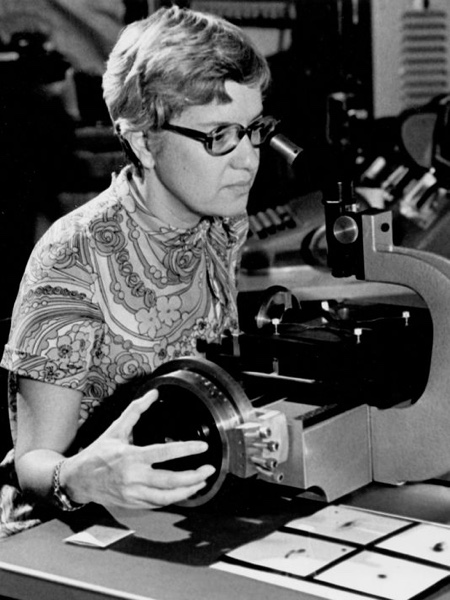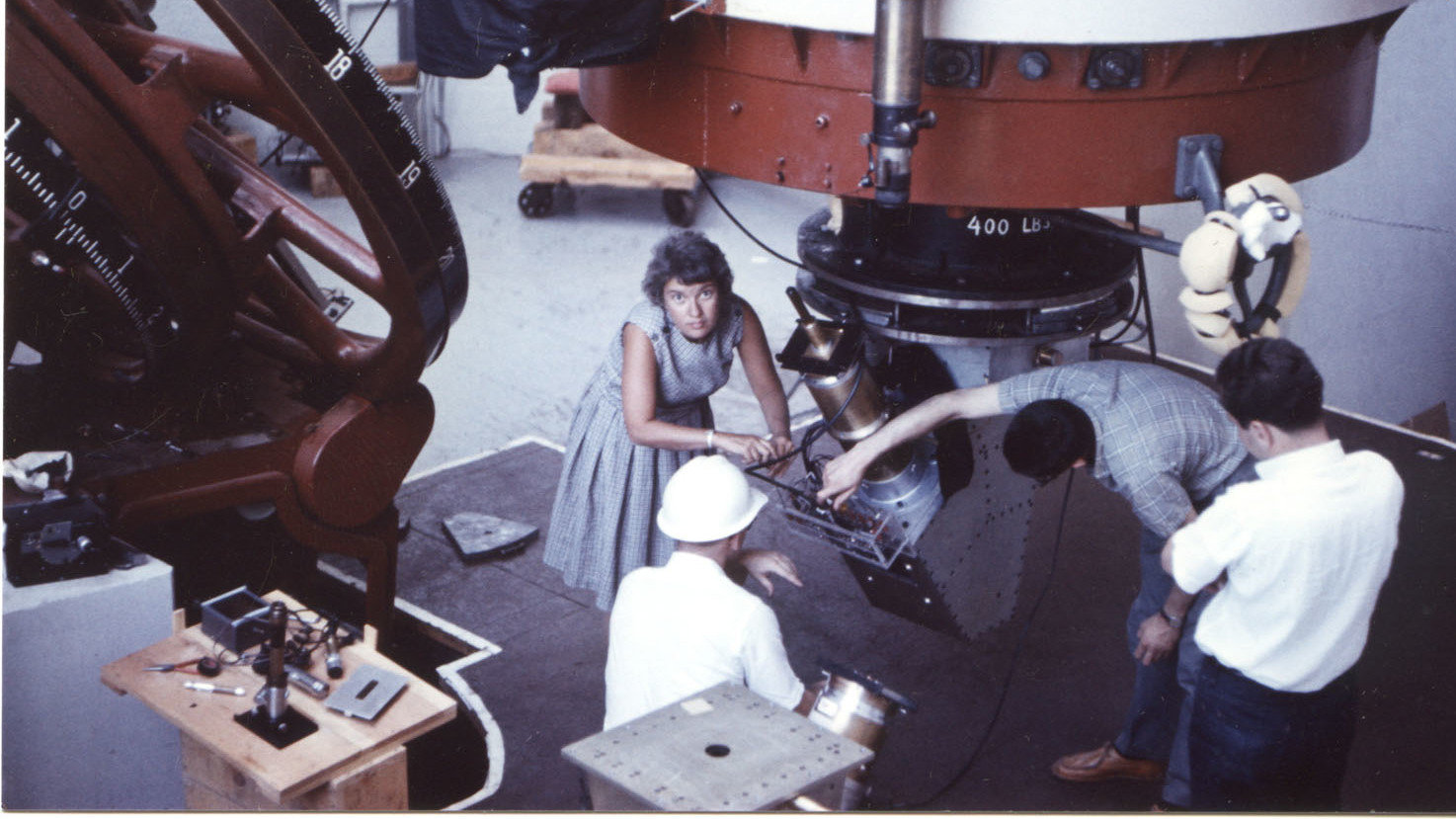
Astronomer Vera Rubin, sometime in the 1970s.
Photo credit: Carnegie Institute of Washington.
Vera Rubin, the astronomer whose work led to the theory of dark matter, died yesterday, December 25, 2016.
Dark matter — that 27% of the mass and energy in the observable universe that we can’t observe directly — is something we know about thanks to astronomer Vera Rubin’s work on the rotation of galaxies. She observed that stars on the outside of galaxies were moving at the same speeds as stars closer in. This shouldn’t have been the case: they should be moving much more slowly, just as the outer planets of a solar system take longer to orbit their star than the planets closer in. Either classical Newtonian physics doesn’t apply at the galactic scale or that galaxies must contain a lot more mass than we can account for through direct observation. We refer to that invisible mass as dark matter, a scientific phrase that gets used even in non-scientific circles as a colloquialism.
Vera Rubin at the Lowell Observatory, 1965.
Photo credit: Carnegie Institute of Washington.
From NPR’s report on her passing:
In addition to her groundbreaking work on dark matter, Vera Rubin was a pioneering advocate of women in the sciences.
She was passionate about astronomy from the age of 10. Rubin once explained to an interviewer that it’s not like she was planning on breaking into an all-male world.
“I didn’t know a single astronomer, male or female,” she said in the interview, republished in her book Bright Galaxies, Dark Matters. “I didn’t think that all astronomers were male, because I didn’t know.”
But as her career advanced, the scarcity of women in her field was readily apparent. According to a profile of Rubin from Cosmic Horizons, she was the only astronomy major to graduate from the women’s college Vassar in 1948.
She was rebuffed by Princeton’s astronomy program because it didn’t accept women, a policy in place until 1975. Instead, she studied at Cornell and Georgetown — where, she notes, she started her Ph.D. program at the age of 23, with one young child and another on the way.
She was the first woman allowed to observe at Caltech’s Palomar Observatory, the Carnegie Institution says.
Rubin, who was elected to the National Academy of Sciences and awarded the National Medal of Science, continually pushed for women to be admitted to scientific institutions and organizations.
“I live and work with three basic assumptions,” Rubin once wrote:
“1) There is no problem in science that can be solved by a man that cannot be solved by a woman.
“2) Worldwide, half of all brains are in women.
“3) We all need permission to do science, but, for reasons that are deeply ingrained in history, this permission is more often given to men than to women.”
Rubin also advocated for scientific literacy in the world at large. “We need senators who have studied physics and representatives who understand ecology,” she said in a commencement address in 1996.
Want to know a little more about dark matter and Vera Rubin’s contribution to our understanding of the universe? You’ll want to watch the 13th and final episode of the Neil deGrasse Tyson version of Cosmos. If you want to jump right to dark matter and Vera Rubin, start at around the 13:20 mark:
We lost a great mind yesterday with the death of Vera Rubin. From her, we learned that there’s more to the universe than we thought, that we need more women in science, and most importantly, that you can find amazing things when you do the math.
